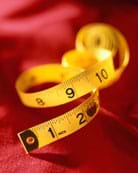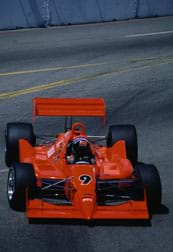Quick Look
Grade Level: 6 (5-7)
Time Required: 30 minutes
Expendable Cost/Group: US $0.00
Group Size: 2
Activity Dependency: None
Subject Areas: Measurement, Number and Operations

Summary
Students investigate the difference between qualitative and quantitative measurements and observations. By describing objects both qualitatively and quantitatively, they learn that both types of information are required for complete descriptions. Students discuss the characteristics of many objects, demonstrating how engineers use both qualitative and quantitative information in product design.Engineering Connection
Engineers must be able to communicate using both quantitative and qualitative descriptions and specifications. Much of engineering involves translating a client's request into engineering requirements. For example, if a client wants a home that is energy efficient, the engineer might determine a target value for kilowatt-hour use.
Learning Objectives
After this activity, students should be able to:
- Explain the difference between qualitative and quantitative descriptions.
- Demonstrate that engineers use both qualitative and quantitative information in new product design.
Educational Standards
Each TeachEngineering lesson or activity is correlated to one or more K-12 science,
technology, engineering or math (STEM) educational standards.
All 100,000+ K-12 STEM standards covered in TeachEngineering are collected, maintained and packaged by the Achievement Standards Network (ASN),
a project of D2L (www.achievementstandards.org).
In the ASN, standards are hierarchically structured: first by source; e.g., by state; within source by type; e.g., science or mathematics;
within type by subtype, then by grade, etc.
Each TeachEngineering lesson or activity is correlated to one or more K-12 science, technology, engineering or math (STEM) educational standards.
All 100,000+ K-12 STEM standards covered in TeachEngineering are collected, maintained and packaged by the Achievement Standards Network (ASN), a project of D2L (www.achievementstandards.org).
In the ASN, standards are hierarchically structured: first by source; e.g., by state; within source by type; e.g., science or mathematics; within type by subtype, then by grade, etc.
International Technology and Engineering Educators Association - Technology
-
Requirements for design are made up of criteria and constraints.
(Grades
6 -
8)
More Details
Do you agree with this alignment?
-
Critue whether existing and proposed technologies use resources sustainably.
(Grades
9 -
12)
More Details
Do you agree with this alignment?
State Standards
Colorado - Math
-
Describe the nature of the attribute under investigation, including how it was measured and its units of measurement.
(Grade
6)
More Details
Do you agree with this alignment?
Materials List
Each group needs:
- ruler
- mass scale
- Don't Confuse Your Qs! Worksheet, one per person
To share with the entire class:
- an assortment of objects (such as spatula, scissors, ball, wire whisk, wood block, fake flower, photo frame, coffee mug, toy racecar, etc.)
Worksheets and Attachments
Visit [www.teachengineering.org/activities/view/cub_qandq_activity1] to print or download.Pre-Req Knowledge
Students should be able to make measurements using rulers and mass scales.
Introduction/Motivation
Today we will learn the difference between "qualitative" and "quantitative." We will see that a complete description uses both types of information.
Imagine describing to another person how a sailboat looks. You might say that it has "white sails" or is "very tall." But that person may wonder, "how many white sails?" or "how tall?" This is why both qualitative and quantitative information are useful.
Pretend you are an engineer in charge of designing a new home water filter (or name some other products). How would you describe it to another engineer? Talk to the student next to you about the words and numbers you would use to describe the water filter. (Give students a short amount of time to do this.)
When we use words to describe objects, such as "small," "lightweight" or "gray," this is called qualitative information. Qualitative is a description of an object's quality. When we use numbers to describe things, such as "filters 6 liters of water in 60 seconds," "20 cm tall" or "costs $75," this is called quantitative information. Quantitative is a description of a quantity. To clarify the difference between these words, remember "qual" refers to "quality" and "quant" refers to "quantity." (Write this on the board.) Let's recall the new water filter we are engineering. Which descriptions of your filter were qualitative? Which were quantitative?
Engineers also must consider many qualitative and quantitative words (as provided in descriptions and definitions) when given design specifications by their clients. These terms are often called "constraints." Constraints are rules and conditions that are required of the design. For example, a new school might be required to be a certain size to fit on an area of land, it may need to accommodate a certain number of people, and it may need to fit in with the style of buildings in the area. The size and capacity are quantitative constraints, while the style of building is a qualitative constraint. Cost, size, time, weight and speed are examples of quantitative constraints. Color, safety and style are examples of qualitative constraints.
Engineers must be able to thoroughly describe product designs to their clients or target audiences. Why it is important to be able to communicate a design accurately? (Possible answers: for good communication and accuracy in making decisions, meeting requirements, efficiently manufacturing, creating marketing materials, etc.)
Today, we are going to practice using both qualitative and quantitative words to describe some products. We will use a ruler, scale and pencil as tools to help us describe several items. Whenever possible, we will use both types of words in our product descriptions, so as to clearly communicate their important characteristics.
Procedure
Background
Engineers use two types of descriptions to describe objects and values. Qualitative descriptions use words to describe things. For example, "the car is white" and "the plastic is soft" are qualitative descriptions. Quantitative descriptions use numbers to describe things. "The car weighs 900 kg" and "the plastic deforms under a force of 10 Newtons" are examples of quantitative descriptions. The most complete descriptions use both qualitative and quantitative descriptions.
Before the Activity
- Gather materials and make copies of the Don't Confuse Your Qs! Worksheet, one per person.
- Explain to students the difference between qualitative and quantitative information. Use example objects from around the classroom to clarify the difference between the two.
- Write the definitions of qualitative and quantitative on the board.

With the Students
- Divide the class into teams of two students each.
- Give one object and two worksheets to each pair of students. Remind students that engineers use qualitative and quantitative descriptions in the design, build and test process for everything they create.
- Explain that the worksheet contains three columns. Use the left column to record an object's name, use the middle column to record your qualitative descriptions of the object, and use the right column to record your quantitative descriptions of the object. Use the ruler, scale and other available tools to make accurate observations and measurements.
- Direct students to determine two qualitative and two quantitative descriptions for each object, recording them on their worksheets.
- Allow enough time (about 5-10 minutes) for each group to write two qualitative and two quantitative descriptions of an object before switching items with another group. 6. While students are working, ask the following questions to the groups:
- Which item was most difficult to describe qualitatively? Why?
- Which item was most difficult to describe qualitatively? Why?
- What other things do engineers create that can be described both qualitatively and quantitatively?
- Have students complete their worksheets by describing five of the objects and individually answering the questions at the bottom of the worksheets.
- Conclude with a class discussion; see the post-activity in the Assessment section.
Vocabulary/Definitions
constraint: A limitation or restriction. For engineers, constraints are the limitations and requirements that must be considered when designing a workable solution to a problem.
qualitative: Description using words. Pertaining to or concerned with quality or qualities.
quantitative: Description using numbers. Pertaining to the describing or measuring of quantity.
Assessment
Pre-Activity Assessment
Question/Answer: Ask students the following questions; have them raise their hands to answer.
- Do engineers use words or numbers to describe their designs and products? (Answer: Engineers use both words and numbers!)
- Why would an engineer use words to describe a product? Provide an example. (Answer: An engineer uses words that the target audience would understand or relate to. For example, an engineer might describe an iPod as "small," "compact" or "portable.")
- Why would an engineer use numbers to describe a product? Provide an example. (Answer: An engineer uses numbers to describe the performance or technical specifications of a product. For example, an engineer might design a snowboard that weighs less than 10 lbs.)
Activity Embedded Assessment
Worksheet: Have students complete the Don't Confuse Your Qs! Worksheet. Review their answers to gauge their understanding of the topic.
Post-Activity Assessment
Discussion: Have students raise their hands to share their individual answers for Question 2 at the end of the worksheet, listing the qualitative and quantitative characteristics of an engineered product (appliances, toys, games, gadgets, structures, etc.). Write the products described by the students on the board. Have students explain what type of engineer creates each item and how they would describe it qualitatively and quantitatively. Which characteristics might be considered constraints (limitations of size, weight, cost, color, etc.)?
Troubleshooting Tips
If the objects in the Materials List are not readily available, use objects found in the classroom, such as globe, chair, eraser, clock, paint brush, calculator and textbook.
Activity Extensions
Have students interview a neighbor, friend or family member about a specific technology they use. Students should gather an understanding about what this person likes or dislikes about the technology and be able to translate these qualitative observations into quantitative descriptions. For example, a family member may like that their iPod fits in a pocket. Qualitatively, the iPod can be described as "small." Quantitatively, it can be described as "90mm x 40mm x .75mm."
Activity Scaling
- For lower grades, use the Don't Confuse Your Qs! Worksheet (Lower Grades) and require students to write just one qualitative and one quantitative description for each of three items. Also, demonstrate the procedure with one or two of the objects before beginning the activity.
- For upper grades, instruct students to each draw something created by engineers (for example, a train, iPod, surgical tool, etc.) and label three qualitative and three quantitative aspects of the item.
Subscribe
Get the inside scoop on all things TeachEngineering such as new site features, curriculum updates, video releases, and more by signing up for our newsletter!More Curriculum Like This

Through an adult-led field trip, students organized into investigation teams catalogue the incidence of plastic debris in different environments. They investigate these plastics according to their type, age, location and other characteristics that might indicate what potential they have for becoming...
Copyright
© 2008 by Regents of the University of Colorado.Contributors
Megan Schroeder; Malinda Schaefer Zarske; Denise W. CarlsonSupporting Program
Integrated Teaching and Learning Program, College of Engineering, University of Colorado BoulderAcknowledgements
The contents of these digital library curricula were developed by the Integrated Teaching and Learning Program under National Science Foundation GK-12 grant no. 0338326. However, these contents do not necessarily represent the policies of the National Science Foundation, and you should not assume endorsement by the federal government.
Last modified: January 31, 2018






User Comments & Tips